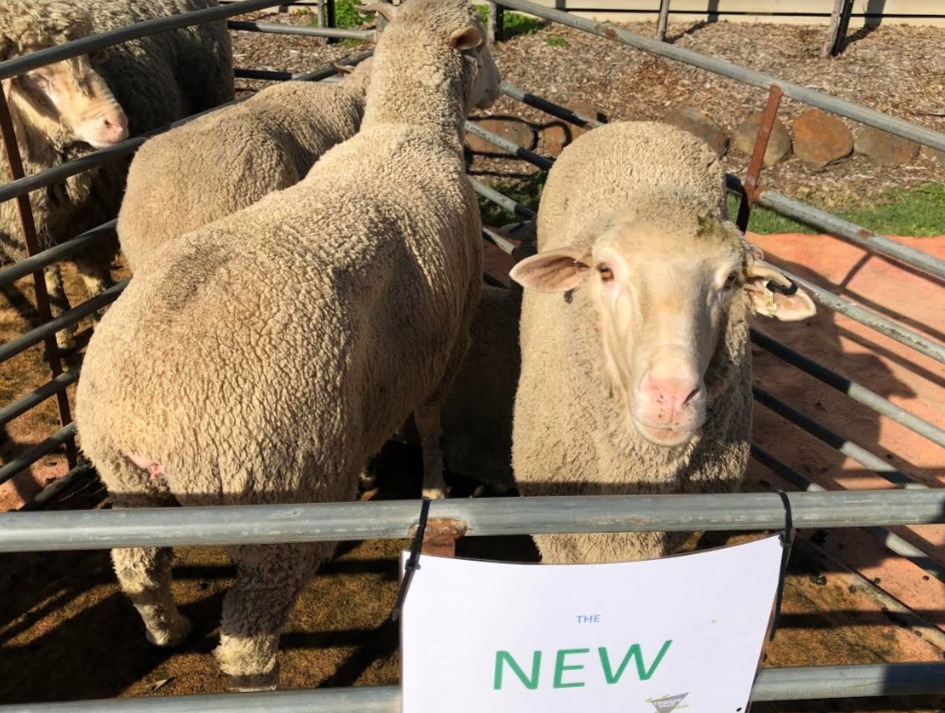There are a variety of breeds of Merino sheep, each having distinct characteristics and traits. Here are some of most common Merino sheep breeds and their differences. Spanish Merino: The Spanish Merino is among the oldest Merino species, is famous for its exceptional wool production and high yield. The breed is tolerant of all environments and has the highest level of resistance to disease.
American Merino: The American Merino breed was developed in the United States around the 19th century. It's known for its soft, fine wool. This breed is particularly well-suited to harsh winter conditions and is immune to numerous common sheep diseases.
Saxon Merino - This Merino shearer is a specific fine-boned Merino that is well-known for producing soft, fine wool. The Merino is smaller than the other Merino species and is particularly suited to hot and dry climates.
Peppin Merino - The Peppin Merino was an Australian breed developed in the 19th century. This breed is famous for its high-quality wool and is particularly suited to the hot and dry climate in Australia.
Rambouillet - Rambouillet, a Merino sheep breed, was created in France in the 18th century. This breed is known as being able to adapt and durable in various conditions. Rambouillet wool is typically coarser than other Merino breeds, however it is still highly sought-after because of its superior quality.
Polwarth - The Polwarth Merino sheep breed was created in Australia in late 19th century. This breed is beloved for its soft and beautiful fiber and is particularly suited in the cooler, wetter climates in south Australia.
The distinct characteristics and qualities of Merino sheep are determined by the breed and environment that they were born in. Breeders often look for certain traits such as soft wool or hardiness. They also look for flexibility so that the possibility of new Merino breeds can be developed.

What Is The Difference Between Lightweight, Heavyweight, And Midweight Base Layers Of Merino Wool?
The fabric's thickness, warmth, and weight are the main factors that differentiate light, mediumweight, and heavyweight Merinowoo base layers. Below is a list of the main differences between the three kinds of base layer. Lightweight Merino Wool base layers are typically made from a thin material that breathes well and can endure mild and cold conditions. This is the most suitable base layer for intense activities. You'll need fabrics with good wicking properties to keep your body cool. It can also be used to cover other layers in cooler climates.
Midweight Merino wool base layers are made of an extra-thick fabric that offers more warmth and insulation than lighter base layers. This base layer is great for cold to cool weather and is ideal to perform activities that don't need sweating heavily.
Heavyweight Merino wool base layers are made of the finest and warmest fabrics. They are ideal for extreme cold temperatures. This layer is perfect for leisure activities like skiing or snowshoeing, in which you don't expect to sweat.
You must take into account the weather conditions and the intensity of your activities when selecting the best Merino wool baselayer for you. A light base layer is ideal for extreme sports and cool weather. However, a midweight layer is appropriate for cooler temperatures and moderate - to heavy-intensity sports. A heavyweight layer is ideal for colder weather and activities with low intensity. You can layer on or decrease it based on the weatherconditions, therefore it is better to choose an a bit lighter base layer over one that's too heavy. Be sure to ensure that the base layer is well-fitted and allows for full motion. Go read more about merino wool base layers info for blog info.

Why Are The Merino Wool And Himalayan Wool Paired To Create The Perfect Base Layer For Skiing?
Merino wool and Himalayan yak yarn can be combined to make an ideal base layer perfect for skiing. Merino wool is known for its suppleness and moisture-wicking characteristics in addition to its temperature regulation as well as its the softness. Himalayan yak wool, however, is known for its warmth, durability, and warmth. These two fibers can be combined to create a base layer that provides exceptional warmth, moisture management, breathability, and is ideal for skiing. Merino wool regulates body temperature, wicks the moisture away, and helps keep you dry. Yak wool is an insulation layer, which provides warmth for cold conditions. Merino wool blended with yak yarn is extremely robust and is able to endure wear and tear. It's a great base layer to use to perform more vigorous activities such as skipping. Merino wool paired with Himalayan-yak wool makes a base layer that is ideal for skiing and other activities that require cold weather. Go best hiking mid layer blog for more tips.

What Alternatives Do You Have To Yak Wool And Merino For Ski Wear And What Makes It Superior?
Although there are many alternatives to Merino wool or Himalayan Yak wool that can be used for ski clothing, they might not be as effective at keeping you dry and warm when you're on the slopes. Below are some alternatives and a few reasons why they may be inferior Cottonis a good choice. Cotton is a common fabric used in clothing, but it's not a good option for skiing. Cotton is a water-retentive fabric that retains moisture. This could make you feel uncomfortable and cold. In addition, it doesn't offer good insulation, so it's not able to keep you warm in cold weather.
Polyester-Polyester is a type of synthetic fabric used for ski clothing. Polyester is quick drying and moisture-wicking however it does not provide the same insulation or warmth as Merino wool and Himalayan Yak wool. Some people also find polyester to be less breathable and comfortable as natural fibers.
Nylon- Nylon is a synthetic fabric that is well-known for its strength and resistance to damage. It can be utilized in ski gear. However, it doesn't provide warmth or insulation. Nylon is also not as breathable than natural fibers like Merino wool. This makes uncomfortable for prolonged time periods.
FleeceThe Fleece Fleece is a great choice as a layering fabric for skiing. Although it provides insulation and warmth but it's not as efficient as natural fibers like Merino wool and Himalayan yak wool. Some people also find fleece less breathable than natural fibers and more susceptible to absorbing moisture.
There are a variety of other fabrics other than Merino wool or Himalayan Yak wool that could be used to make ski clothes. However, these fabrics may not be as efficient in keeping you warm and dry on the slopes. Merino and Himalayan wools are better in regards to warmth, insulation as well as moisture control and air-flow. These natural fibers make ski clothing more appealing.